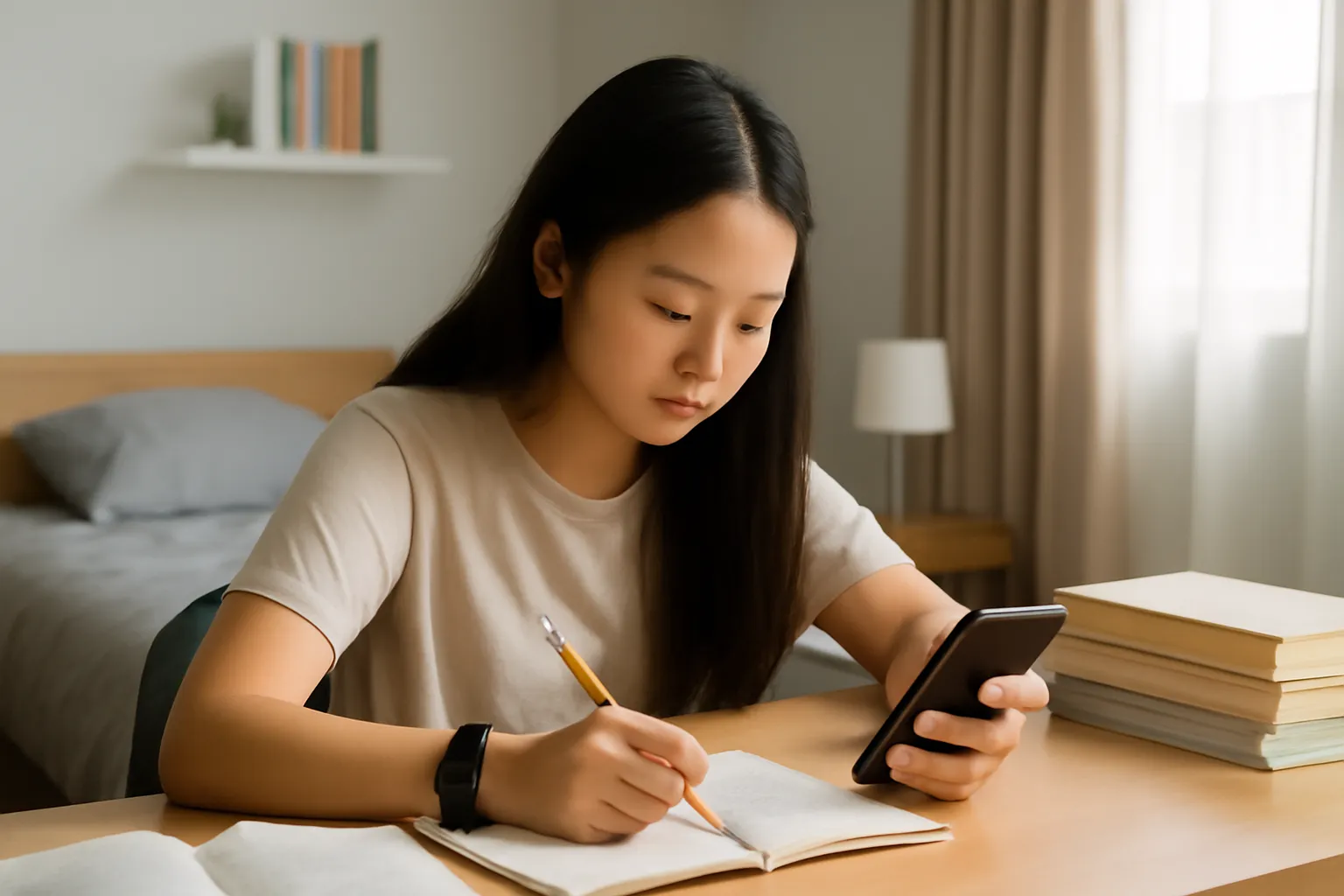High school students face numerous academic challenges, balancing schoolwork, extracurricular activities, and social life. Understanding how to optimize study time, employ effective study methods, and create a conducive study environment is crucial to their success. In this article, we will explore strategies for enhancing high school student study habits, focusing on time management, phone usage, and study environments.
High school is a time when students face academic pressures while trying to maintain a balanced lifestyle. Efficient study practices are essential for academic success, yet many students struggle with managing time effectively. With the overwhelming presence of distractions, especially from smartphones and social media, how can students make the most out of their study sessions?
One of the first steps is to understand the importance of time management. Research has shown that students who effectively manage their study schedules tend to perform better academically. But how can students maximize their study time without burning out? This section will delve into the average study time for high school students, providing insights on how to strike a balance between study, rest, and recreation.
In addition to time management, creating the right study environment is critical. This involves more than just having a clean desk; it’s about cultivating a space that promotes concentration and productivity. Let’s explore how students can design their study areas for maximum efficiency.
Korean High School Student Study Time: How Much Is Enough?
When it comes to study time, there is no one-size-fits-all approach. The average study time for Korean high school students can be quite intense. Students often dedicate long hours to their academic work, sometimes stretching late into the night. However, it’s important to understand that the ideal study time varies for each individual, depending on their learning style and the subjects they are tackling.
Many Korean students spend around 10 hours a day studying, including time spent in school, after-school programs, and private tutoring sessions. This study time is often interspersed with breaks and social activities, but the long hours can take a toll on mental and physical health. That’s why it’s essential to adopt an effective study schedule that incorporates rest and avoids burnout.
To create an effective study plan, students can break down their tasks into smaller, manageable chunks, using techniques like the Pomodoro method (studying for 25 minutes and taking a 5-minute break). By structuring their study time efficiently, students can enhance their focus and avoid procrastination.
Tips for Managing Study Time:
-
Set Clear Goals Understand the subjects and topics to focus on each day.
-
Prioritize Tasks Tackle harder subjects first when energy levels are high.
-
Use a Timer Try time management techniques like Pomodoro to structure study sessions.
-
Take Breaks Don’t forget to rest and recharge for better productivity.
By incorporating these time management techniques, students can optimize their study sessions without overwhelming themselves.
The Role of Phones in High School Student Study Habits
In today’s digital age, smartphones are indispensable tools for high school students. However, when used excessively, they can become major distractions during study time. Many students find themselves switching between apps, social media, and study materials, which can disrupt their concentration and hinder learning.
The key to utilizing smartphones productively lies in using them as a tool rather than a distraction. For example, students can use study apps to track their schedules, take notes, or listen to educational podcasts. On the flip side, using social media apps or texting friends during study sessions can lead to a lack of focus.
The solution? Students can use “study modes” or “focus modes” available on smartphones to block out distractions during dedicated study time. Setting up a study-specific space on the phone with only necessary educational apps and resources can help limit distractions.
How to Use Your Phone Effectively for Studying:
-
Study Apps Use apps like Notion, Evernote, or Google Keep to organize study notes and reminders.
-
Focus Modes Activate the “Do Not Disturb” or “Focus” mode to limit notifications.
-
Timer and Tracker Apps Apps like Forest or Toggl can help students manage their study time effectively.
By leveraging the power of smartphones wisely, students can create a productive study environment without feeling overwhelmed by the constant influx of distractions.
How to Create the Perfect Study Room for High School Students
A study room should be more than just a place to sit and open textbooks. The study environment plays a significant role in how effectively a student can concentrate and retain information. For high school students, creating a study room that fosters concentration and minimizes distractions is key to academic success.
The study room should be free from distractions, with proper lighting, ventilation, and ergonomic furniture. A comfortable chair and a spacious desk can make a big difference. A clutter-free environment can also help students focus better.
In terms of design, students can create an environment that suits their personal preferences—whether it’s a minimalist space with only the essentials or a more personalized setup with motivational posters and personal items. The goal is to create an atmosphere where students can immerse themselves in their studies without outside interference.
Key Elements of a Productive Study Room:
-
Lighting Natural light is ideal, but if not possible, opt for warm LED lights that reduce eye strain.
-
Furniture Invest in a comfortable study chair and a spacious desk to encourage good posture.
-
Organization Use shelves or organizers to keep books and supplies neat and within reach.
-
Technology Keep tech distractions to a minimum, and consider using headphones for concentration.
Having a dedicated study room tailored to the student’s needs can lead to improved concentration, productivity, and overall academic performance.
Conclusion
High school students have the potential to thrive academically by adopting effective study habits, managing their time wisely, and creating the right study environment. With the right mindset and strategies in place, students can maximize their study time, use technology effectively, and design a study space that enhances focus and productivity.
As the saying goes, “Success is the sum of small efforts, repeated day in and day out.” With consistent effort, a well-planned study schedule, and a conducive environment, high school students can achieve their academic goals and set the stage for future success.






